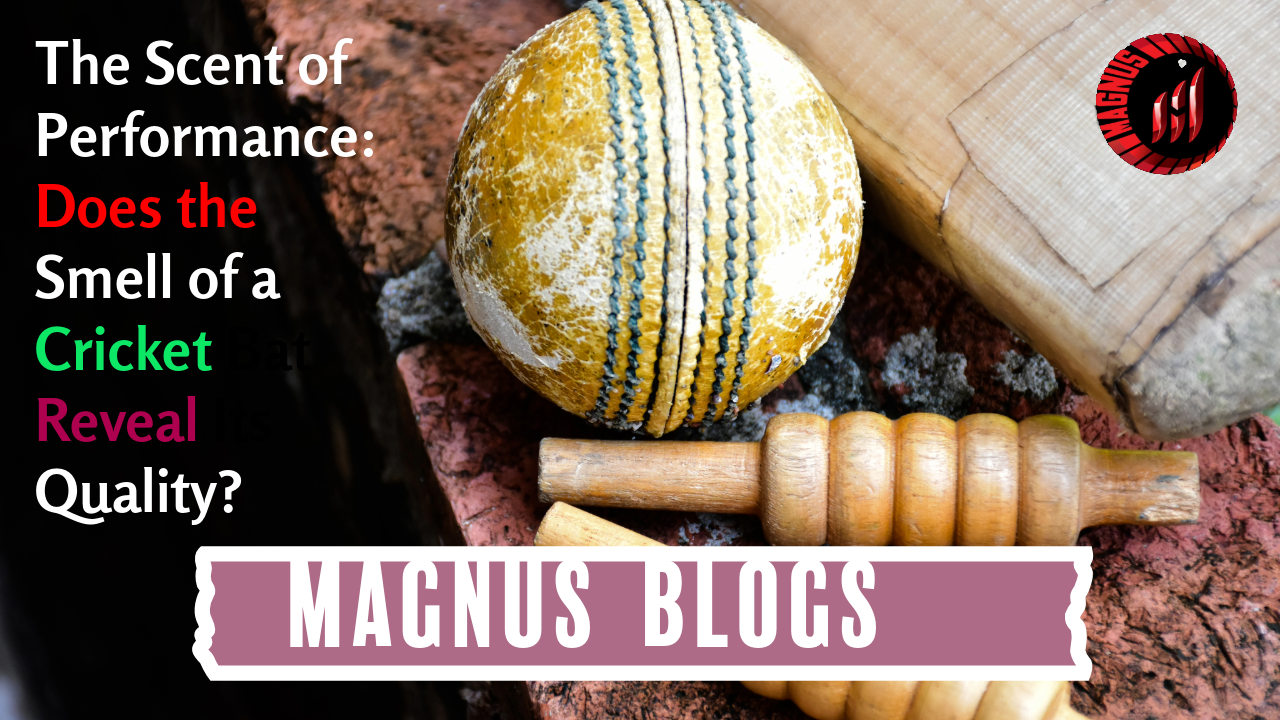Walk into a cricket store or unwrap a brand-new bat, and there's a familiar rush: the earthy aroma of willow, a hint of linseed oil, maybe even the faint smell of polish or adhesive. For some players, this scent instantly sparks memories of the nets, match day nerves, or that perfect cover drive. But could that smell mean more than nostalgia? Could the scent of a cricket bat actually reveal something about its quality?
In this blog, we explore the surprisingly overlooked role of scent in bat selection and whether your nose might be as useful as your hands when judging craftsmanship.
What Gives a Cricket Bat Its Smell?
A bat’s aroma is a mix of natural and applied materials. Here’s what contributes:
-
Willow Wood (English or Kashmir): Fresh willow has a light, sweet, almost green scent — especially when newly cut or pressed.
-
Linseed Oil: Applied to protect the blade, this gives a warm, nutty smell that deepens over time.
-
Adhesives & Binders: Used in multi-piece bats or for toe/handle reinforcement, sometimes these produce sharper chemical notes.
-
Protective Finishes: Polycoats or varnishes on some bats can leave a synthetic or plastic-like scent.
-
Storage: Bats stored in damp or dusty conditions may pick up musty or stale odors over time.
The combination of these tells a unique sensory story about how the bat was made, finished, and cared for.
Can Scent Indicate Quality?
Surprisingly, yes — to an extent.
1. Natural vs. Artificial Smell
Premium bats, like those from Magnus Cricket, tend to smell cleaner and more natural. This is because they use high-grade willow, minimal synthetic finishes, and carefully cured linseed oil. Lower-end bats may use extra adhesives, coatings, or processed wood substitutes that give off stronger chemical smells.
2. Overtreatment or Shortcuts
An overly glossy or plasticky scent might signal that the bat has been heavily treated or lacquered to mask lower-quality willow or shorten the pressing/oiling process. These bats may look sharp but often don’t offer the same long-term feel or responsiveness.
3. Freshness and Storage
A bat that smells overly dry or musty may have been stored poorly or for too long in suboptimal conditions. While aging doesn’t necessarily damage a bat, poor humidity control can.
The Role of Smell in Player Connection
For many cricketers, the smell of a new bat creates an immediate emotional connection — a kind of gear-based chemistry. Just like musicians often “know” when they’ve found their perfect instrument, players often describe a certain bat as “feeling right.” Scent plays a subconscious role in that.
-
A freshly oiled blade can evoke trust and tradition.
-
A sharp, synthetic smell might feel sterile or unfamiliar.
-
A naturally woody aroma might suggest hand-crafted authenticity.
In short, how a bat smells can affect how a player feels about using it — and that confidence can translate into performance.
Should You Use Smell to Choose a Bat?
It’s not a scientific method, but it’s not useless either. Here’s how you can use scent as an extra tool when testing bats:
-
Take a gentle whiff near the blade — does it smell clean, woody, or overly chemical?
-
Compare multiple bats: do some smell more natural or less treated?
-
If you’re buying from a trusted brand like Magnus, expect a mild linseed and willow scent — nothing overpowering or artificial.
And of course, don’t rely on smell alone. Balance, pick-up, grain, and rebound are still your main guides. But scent? It’s the forgotten sense that might give your instincts just a little extra edge.
Cricket bat types, Cricket equipment in usa, Cricket equipment store, Cricket gloves, Cricket helmet, Cricket kit bags, Cricket retailers, Durable cricket gloves, English willow bats, Icc approved helmets., Kashmir willow cricket bat, Latest kashmir willow bat
